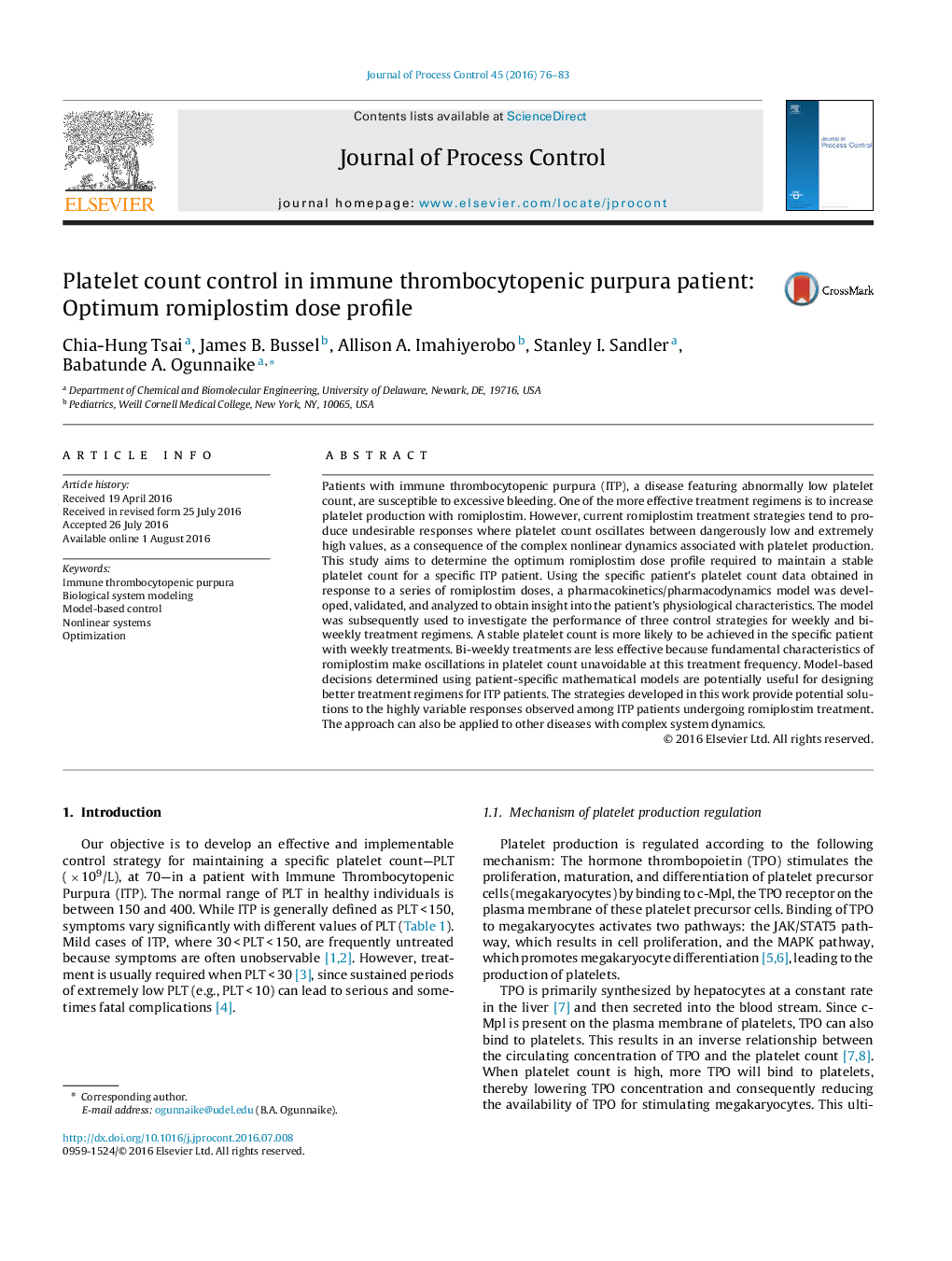| کد مقاله | کد نشریه | سال انتشار | مقاله انگلیسی | نسخه تمام متن |
|---|---|---|---|---|
| 688628 | 1460358 | 2016 | 8 صفحه PDF | دانلود رایگان |
• A pharmacokinetics/phamacodynamics (PKPD) model of romiplostim-mediated platelet production is customized for an immune thrombocytopenic purpura (ITP) patient.
• The model was used to determine optimum romiplostim dose profiles for stable platelet count control in the patient.
• Treatment frequency was identified as a major determining factor in the effectiveness of romiplostim treatment.
• A discrete PI controller is sufficient for maintaining stable platelet count in the patient.
Patients with immune thrombocytopenic purpura (ITP), a disease featuring abnormally low platelet count, are susceptible to excessive bleeding. One of the more effective treatment regimens is to increase platelet production with romiplostim. However, current romiplostim treatment strategies tend to produce undesirable responses where platelet count oscillates between dangerously low and extremely high values, as a consequence of the complex nonlinear dynamics associated with platelet production. This study aims to determine the optimum romiplostim dose profile required to maintain a stable platelet count for a specific ITP patient. Using the specific patient’s platelet count data obtained in response to a series of romiplostim doses, a pharmacokinetics/pharmacodynamics model was developed, validated, and analyzed to obtain insight into the patient’s physiological characteristics. The model was subsequently used to investigate the performance of three control strategies for weekly and bi-weekly treatment regimens. A stable platelet count is more likely to be achieved in the specific patient with weekly treatments. Bi-weekly treatments are less effective because fundamental characteristics of romiplostim make oscillations in platelet count unavoidable at this treatment frequency. Model-based decisions determined using patient-specific mathematical models are potentially useful for designing better treatment regimens for ITP patients. The strategies developed in this work provide potential solutions to the highly variable responses observed among ITP patients undergoing romiplostim treatment. The approach can also be applied to other diseases with complex system dynamics.
Journal: Journal of Process Control - Volume 45, September 2016, Pages 76–83
